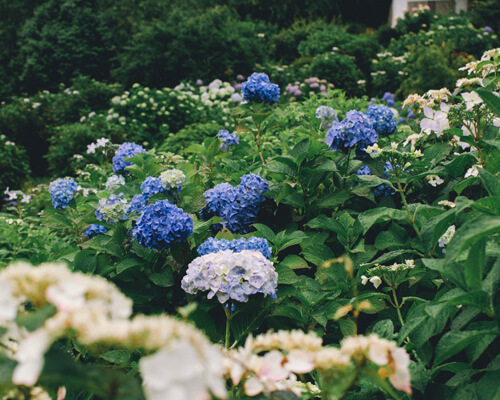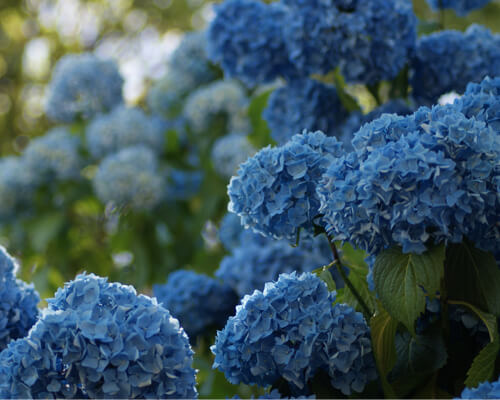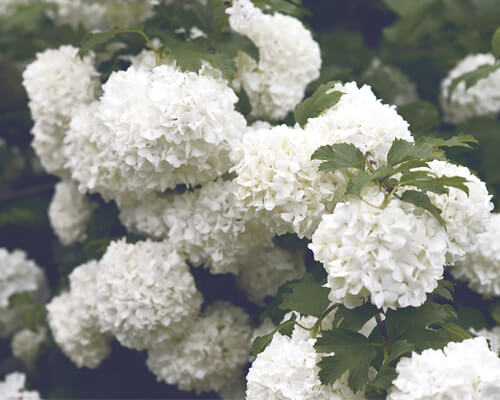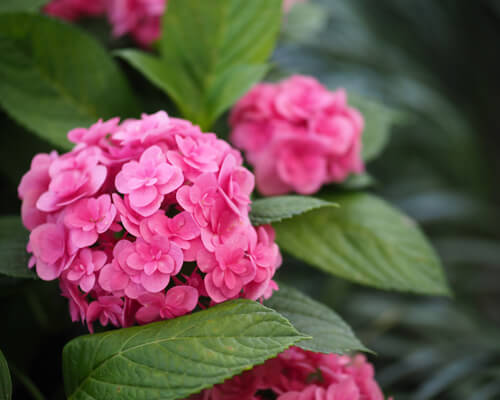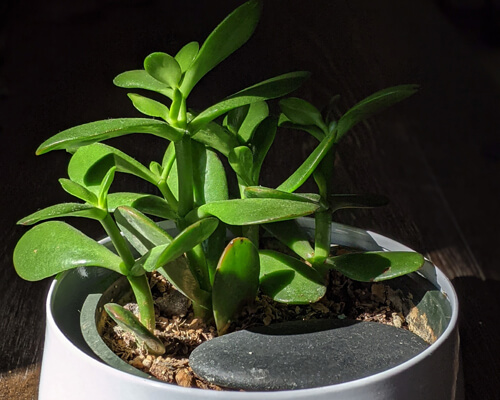Types Of Ferns

Ferns are some of the biggest plants on Earth, but did you know that not all ferns are trees? This article will tell you all about the types of ferns and why they’re so interesting.
Types of ferns for indoors

Wolf-tailed fern
Wolf-tailed fern, also known as dragon’s claw fern and rabbit’s foot fern. It has exposed rhizomes, fleshy, about 6-12 cm long, with brown scales and hairs on the surface. Like rabbit’s feet, so flower farmers call it rabbit’s foot fern or wolf tail fern.
Its leaf shape is beautiful, the shape is unrestrained, and the rhizomes and leaves are of high ornamental value. And it is a very popular indoor ornamental fern. Usually placed in a bright scattered light place, keep the potting soil moist, and spray water on the leaves or around every two days to increase the humidity.

Maidenhair Ferns
The branches of the fern are as thin and soft as iron wire. Its stems and leaves are beautiful and colorful, and the plant size is small. It is also a plant that likes shade and humidity, so it should be watered more often. If the branches are withered, new ones will grow out soon after they are cut off.

Bird’s nest fern
The bird’s nest fern is also known as Shansu flower. Its leaves are green and bright all year round. It is a famous epiphytic foliage plant. People often use it to make hanging pots for viewing, as the decoration of hotels and courtyards. Bird’s nest fern likes high temperature and high humidity, is extremely shade-tolerant, and can grow well with little light.

Boston fern
Boston fern has a graceful plant type, green leaves, and evergreen. It is an indoor potted plant with the great ornamental value among ferns.
At the same time, it is the most effective “biological purifier”. Because it can absorb formaldehyde in the air, and can also inhibit the toluene and xylene released from computer monitors and printers.
It can beautify the environment and purify the air, so people love it deeply. Boston fern likes shade and humidity, and it does not have strict temperature requirements. It is a relatively cold-resistant variety among ferns.

Heian Fern
This fern is a relatively popular fern species recently. Its branches and shape of leaves is very smooth and beautiful, Therefore, Ping An fern has a high ornamental value.
Heian fern is a relatively light-loving type of ferns and can receive appropriate direct sunlight. It is neither heat nor cold, so keep it in a cool place in summer and a warm place in cold weather.

Staghorn fern
It is the most peculiar type of ornamental fern, and it belongs to the epiphytic ornamental fern. People usually arrange the ferns in parks, botanical gardens, shops, living rooms, window sills and other places. This ferns like high temperature and humidity, so they should be placed in scattered light.

Green coral fern
The green coral fern is also called green earth. Its color is bright green, leaves are small and cute, shape is graceful and romantic, and it has a romantic atmosphere.
You can place this type of ferns on the desktop to prevent radiation and also relieve visual fatigue. They like the warm and humid environment, placed in scattered light conservation.
Types of ferns for outdoors
Western sword fern
Western sword fern is a very popular evergreen types of ferns with sword-shaped leaves that grow in a clump of roots. The pith of the leaf is white and its underside has long, flat scales. It grows in full sun to part shade and likes moist well-drained soil with plenty of organic material mixed into it. Mature specimens can reach 4 to 5 feet tall and 3 feet wide.

Japanese tassel fern
The Japanese Tassel Fern has an upright, clump-forming habit. This plant grows as a tall, dense ‘tree’ with sword-shaped fronds divided into several sections and narrow leaves pleated into round segments.
It is common in the greenhouse floral industry, and this types of ferns is the most popular member of the Nephrolepis genus. Many hobbyists around the world like to grow this plant as a houseplant.

Hay scented fern
The Hay scented fern is a small creeping ground cover with a pale green frond. Its blade shape and color vary depending on the variety and can also be altered by how much light it receives. This evergreen types of ferns grow in moist but well-drained soil and are drought tolerant once established.

Japanese painted fern
The Japanese painted fern has a unique shape and color. It is also commonly known as rabbit’s foot fern. Its leaf, growing environment and overall growth habit of this plant are very different from other types of potted plants.
This fern has dark green, leaves that grow out of a pot-shaped body. The leaves can be anywhere between 8″ and 12″ long and 3″ to 4″ wide at the widest part of the leaf. As it grows, the fern will begin to ball up with new growth pushing along with it.

Osmunda fern
The osmunda fern looks like a graceful, ornamental plant. With a very relaxed shape and comes in a variety of colors ranging from green to dark brown.
It has a large, round, bulbous base. The leaves are erect and thin with deeply cut lobes. This types of ferns can survive in all temperate zones worldwide and grow best in shady parts of the garden.
What ferns survive winter?

Common maidenhair fern
The common maidenhair fern (Adiantum pedatum) is well known as a cold-hardy plant. People often use it for ground cover in areas that are exposed to both the hot summer sun and the bitter winter cold.
Cold hardiness is the ability of a plant to survive when the temperature drops below its normal range. The normal range for most plants that we see around us in our everyday life is between 45°F/7°C and 75°F/24°C.
In other words, they will grow normally if the temperature is between these two values. If the temperature goes above this range (ie, above 75°F/24°C), the plant will start to show symptoms of stress. This symptom may lead include leaf yellowing, wilting, stunted growth, slow growth, and eventually death.
Temperatures below their normal range still can kill the plants with cold hardiness. But they are generally able to withstand colder temperatures better than non-hardy plants.
Common maidenhair ferns can tolerate freezing to 32 F/-0.5 C without sustaining any serious damage. In fact, plants growing under natural conditions are frequently exposed to temperatures below freezing for extended periods of time during the winter months.

Hay scented fern
How can this plant survive in winter with such a small amount of leaves? It’s due to the fact that it stores nutrients and water during the growing season. So it can make use of these resources as long as possible during winter.
When the plants need food and water, the roots always remain under the surface and they store nutrients, so that they can provide nutrients as long as possible they can. The roots also prevent drying out of the soil because they store more water than the top part of the plant.
Hay scent fern is a perennial plant that grows in the wild, which can survive and grow in the winter with little care. Its name comes from its scent, which resembles that of hay.
The plant grows best in shade or partial shade. It is often found on the forest floor in high-shaded areas, but you can also grow it indoors all year round.

Broad beech fern
When most plants are dormant in winter, broad beech ferns are active and growing. In fact, they are one of the first plants to begin growing in spring.
First off, this types of ferns must already have established a system for storing nutrients for later use, as many species do.
It does this by supporting the growth of microbes that live inside the plant’s cells. These microbes capture nutrients from the soil, which the plant can then use when it has access to less food.
But it’s not always that easy. That’s because when temperatures get too low, these microbes can go into hibernation before they can finish their job of increasing the plant’s nutrient stores.
However, even when this happens, the fern has another trick up its sleeve: It has a chemical in its cells that helps it keep going.
This chemical is called “antifreeze,” and it prevents the water inside the plant from freezing before the temperature reaches -40 degrees Celsius.

Cinnamon fern
If you see cinnamon fern in your yard. You may find it hard to believe that this beautiful plant is hardy enough to survive the winter.
When we see its leaves wilt at the end of the growing season. We are tempted to throw the plant away because most of us think it will die when winter comes.
However, there are some interesting facts about this plant that let us know why it can survive the winter.
The secret of cinnamon fern’s survival lies in its roots. When autumn arrives and the temperature drops below freezing. Cinnamon fern begins to form a protective layer with phyllosilicates (tiny silica particles) around its rhizomes (horizontal stems).
Frost layer remain protect the rhizomes until spring attives and they begin to grow again. This process allows them to survive the cold night temperatures of winter.

Japanese painted ferns
Thanks to its unique adaption of the painted fern, they can use their underground rhizomes to store nutrients and allows the plants survive during the winter months.
During the winter, the rhizomes are dormant, but you can still find it under several inches of snow. In late spring, the rhizome starts to grow again until early fall when they go into dormancy once more.
Besides the storage of nutrients, another adaptation that helps this plant survive in cold temperatures is its thick waxy cuticle that covers all parts of its body including its fronds and roots; which help it retain water very well.
It also has thick stomata on its underside which reduces water loss and allows for an exchange of gases with its environment.

Lady fern
This is a low-growing evergreen fern that thrives in moist, shady areas. It grows well in zones 3-9. Lady fern is extremely hardy and can survive freezing temperatures as long as it has some protection from the cold wind.
In the fall, lady ferns produce new fronds, which grow until the first frost or freeze. Then, the fronds start to die off. If you have lady ferns that are growing in an area where they receive full sun. Then you may want to cut off all of the dying fronds so they don’t dry out and become brittle before winter ends.
They are very hardy and can survive freezing temperatures as long as they have some protection from the cold wind. If there is no protection from the wind, then they will freeze along with everything else.
Lady fern has a rhizome that looks like a fat carrot lying on its side with roots coming out of one end. This rhizome should be dug up in fall and placed in a cool area for the winter months. If give plenty of light during the winter monts, the rhizome will still grow new leaves next year.

Ostrich fern
The name “Ostrich Fern” is probably derived from the fact that it is the only type of fern that can grow in the harsh climate of the Sahara desert.
It can survive extremely hot, dry and windy conditions. As a matter of fact, it is known as an icon for surviving in arid environments.
The reason why Ostrich Ferns can survive in winter is that they are able to go into a dormant state during winter.
They are able to withstand temperatures as low as -5 degrees Celsius. During this period, they lose their leaves and keep their roots intact.
Its leaves do not photosynthesize during this period so they do not need light either. Ostrich ferns have adapted to be able to stay dormant during cold temperatures by keeping their cells hydrated with water at all times.
Even in the absence of surrounding water, cells can retain water in the plant using a structure called the spongy chloroplast, which holds about 70% of the cell volume.
As long as there is moisture in the soil, these plants will continue to grow even if you don’t water them at all.

Southern wood fern
The fern is a plant that can survive in the winter and it does not need to be replanted each year.
It is evergreen, which means it stays green all year long. This fern grows in fertile, wet soil and requires shade from direct sunlight. It can live up to one hundred years, but usually dies after fifty due to old age.
Southern wood fern(Dryopteris ludoviciana) is a native plant of America. This plant can survive in winter because of the special structure of the fronds.
The leaves of the southern wood fern are shaped like arrowheads and the midribs are thickened like a spine, so it’s easy for them to withstand freezing. Because of this, they can grow in zone 5 or below.
To survive winter, wood ferns grow under the ground or under the snow. These ferns are native to the Southern United States and Mexico.
They are very hardy plants. They can survive subzero temperatures. It also survives long periods of drought by going dormant for about four months in late summer and early fall.
Conclusion
If you’ve never heard of these types of ferns before, they are very interesting plants. These ferns don’t need the sun in order to flourish. They can survive and even thrive on the moisture within the soil.
These ferns are hardier than you would think and can even survive without soil whatsoever, just roots above-ground. And that is the reason why they are often called ‘foliage plants’.


